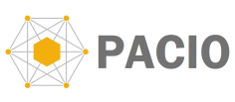PACIO Speech Language Swallowing Cognitive Communication and Hearing (SPLASCH) Implementation Guide - Local Development build (v0.1.0). See the Directory of published versions
| Official URL: http://hl7.org/fhir/us/pacio-splasch/ImplementationGuide/hl7.fhir.us.pacio-splasch | Version: 0.1.0 | |||
| Draft as of 2022-05-04 | Computable Name: PACIOSPLASCH | |||
This PACIO SPLASCH implementation guide describes a means for exchanging observations related to patients’ Speech, Language, Swallowing, Cognitive Communication, and Hearing abilities across various care settings.
This project will identify the data elements regarding eating, swallowing, and functional communication that need to be captured and exchanged across transitions of care in health care settings, based on the framework for the International Classification of Functioning, Disability, and Health (ICF). Examples may include:
To achieve objectives listed above, this project will:
The areas of functional information referenced above is patient focused and can be collected and assessed by members of the interdisciplinary health care team, including but not limited to speech language pathologists, occupational therapists, physical therapists, physicians, nurses, social workers, case managers, or dieticians.
The Post-Acute Care Interoperability (PACIO) community has a strong interest in the exchange of this data and will support the community engagement as needed in order to help develop a standard mechanism for EHR interoperability to improve patient care management. Many stakeholders (both clinical and technical) support PACIO, including MITRE, Centers for Medicare and Medicaid Services (CMS), Office of the National Coordinator (ONC), and over 30 representatives from the health care industry.

The PACIO Project is a collaborative effort to advance interoperable health data exchange between post-acute care (PAC) and other providers, patients, and key stakeholders across health care and to promote health data exchange in collaboration with policy makers, standards organizations, and industry through a consensus-based approach.
The primary goal of the PACIO Project is to establish a framework for the development of Fast Healthcare Interoperability Resource (FHIR) technical implementation guides and reference implementations that will facilitate health data exchange through standards-based use case-driven application programming interfaces (APIs).
The audience for this IG includes architects and developers of healthcare information technology (HIT) systems in the US Realm that exchange clinical and non-clinical data. Business analysts and policy managers can also benefit from a basic understanding of the use of FHIR profiles across multiple implementation use cases. Finally, Quality Reporting Agencies, Standards Development Organizations (SDOs), Payors, Providers and Patients will benefit from this IG.
This Guide is divided into several pages which are listed at the top of each page in the menu bar.
| Term | Definition |
|---|---|
| Business case | A business case summarizes the scope of information exchange covered by the IG. |
| Patient story | Patient stories are fictitious illustrative personal stories that are included to show the personal nature of the information being shared and demonstrate the value of having and sharing personal advance care plan information or, alternatively, the negative outcomes that arise when this information is not available in a high-quality, standardized, sharable digital format. Personas are used to model, summarize and communicate research about people who have been observed or researched in some way. A persona is depicted as a specific person but is not a real individual; rather, it is synthesized from observations of many people. |
| Use case | A use case is a list of technical actions or event steps typically defining the interactions between a role and a system to achieve a goal. The actor can be a human or other external system. Technical scenarios that describe systems interactions between technical actors to implement the business case. |